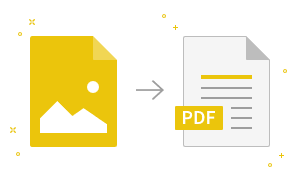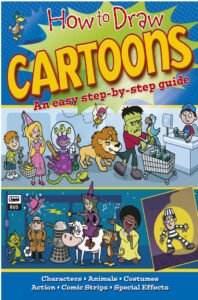NCERT Exemplar Problems Class 7 Science – Physical and Chemical Changes
Question 1:
Which one of the following is a physical change?
(a) Rusting of iron
(b) Combustion of magnesium ribbon
(c) Burning of candle
(d) Melting of wax
Answer:
(d) Rusting, combustion and burning involve chemical changes.
Melting of wax is a physical change.
Question 2:
Which one of the following is a chemical change?
(a) Twinkling of stars
(b) Cooking of vegetables
(c) Cutting of fruits
(d) Boiling of water
Answer:
(b) Cooking of vegetables involves many chemical changes.
Question 3:
A chemical change may involve
(a) change in colour only
(b) change in temperature only
(c) evolution of gas only
(d) All of the these
Answer:
(d) Chemical reactions may accompany change in colour, evolution of heat and gas etc.
Question 4:
Which of the following are true when milk changes into curd?
(i) Its state is changed from liquid to semi-solid.
(ii) It changes colour.
(iii) It changes taste.
(iv) The change cannot be reversed.
Choose the correct option.
(a) (i) and (ii)
(b) (ii) and (iii)
(c) (i), (iii) and (iv)
(d) (i) to (iv)
Answer:
(c) Colour of milk does not change after it convert into curds.
Question 5:
A man painted his main gate made up of iron, to
(i) prevent it from rusting
(ii) protect it from the sun
(iii) make it look beautiful
(iv) make it dust free
Which of the above statements is/are correct?
(a) (i) and (ii)
(b) (ii) and (iii)
(c) Only (ii)
(d) (i) and (iii)
Answer:
(d) Iron gate does not need to be protected from sun. Paints cannot avoid dust.
To prevent rusting of iron gate, we do paint on it. Painting makes it beautiful.
Question 6:
Iron pillar near the Qutub Minar in Delhi is famous for the following facts. Which of these facts is responsible for its long stability?
(a) It is more than 7 m high
(b) It weighs about 6000 kg
(c) It was built more than 1600 yrs ago
(d) It has no rust after such long period
Answer:
(d) Composition of the iron pillar make it resistant of rusting.
It has not rusted after such a long period.
Question 7:
Galvanisation is a process used to prevent rusting of which of the following
(a) ron
(b) Zinc
(c) Aluminium
(d) Copper
Answer:
(a) Layer of zinc is applied on iron surface in galvanisation process to save it from rusting.
Question 8:
Paheli’s mother made a concentrated sugar syrup by dissolving sugar in hot water. On cooling, crystals of sugar got separated.
This indicates a
(a) physical change that can be reversed
(b) chemical change that can be reversed
(c) physical change that cannot be reversed
(d) chemical change that cannot be reversed
Answer:
(a) Crystallisation is a physical process and can be reversed.
Question 9:
Which of the following statements is incorrect for a chemical reaction?
(a) Heat may be given out but never absorbed
(b) Sound may be produced ,
(c) A colour change may take place
(d) A gas may be evolved
Answer:
(a) Heat may be given out as well as absorbed during chemical reactions.
Question 10:
Two drops of dilute sulphuric acid were added to lg of copper sulphate powder and then small amount of hot water was added to dissolve it (Step I). On cooling, beautiful blue coloured eystals got separated (Step II). Step I and Step II are
(a) physical and chemical changes respectively
(b) chemical and physical changes respectively
(c) both physical change
(d) both chemical change
Answer:
(c) Step I and Step II are both physical change.
Very Short Answer Type Questions
Question 11:
State whether the following statements are true or false.
(a) When a candle bums, both physical and chemical changes take place.
(b) Anaerobic bacteria digest animal waste produce biogas.
(c) Ships suffer a lot of damage though they are painted.
(d) Stretching of rubber band is not a physical charge.
Answer:
(a) True, the wax meting is a physical process, while combustion of wax is chemical process,
(b) True
(c) True, salty water of sea causes faster rusting of iron.
(d) False, stretching of rubber band is a physical change
Question 12:
Melting of wax is a change where a solid changes to liquid stawNQive one more such change which you observe in your surroundings
Answer:
Melting of ice is also a change where solid changes into liquid state.
Question 13:
What kind of change is shown by tearing of paper?
Answer:
Tearing of paper is a physical change although, it cannot be reversed.
Short Answer type Questions
Question 14:
Match the items of Column I with the items of Column II.

Answer:
The correct matching is as given:
(a)—(iv), (b)—(vi), (c)—(v), (d)—(i), (e)—(iii), (f)—(ii)
Note
- Carbon dioxide form calcium carbonate with lime water [Ca(OH)2] and turns it milky. It is a chemical change.
- During rusting iron reacts with moist oxygen to form iron oxide, which is called rust.
Question 15:
Fill in the blanks.
(a) Making sugar solution is a………
(b) A physical change is generally……….
(c) Grinding of wheat grain changes its size. It is a…………
(d) Iron benches kept in lawns and gardens get……….. It is a…………….
(e) change because a new……………. is formed.
Answer:
(a) physical
(b) reversible
(c) physical
(d) rusted, chemical, substance
Question 16:
Classify the following processes into Physical or chemical changes.
(a) Beating of aluminium metal to, make aluminium foil
(b) Digestion of food
(c) Cutting of a log of wood into pieces
(c) Burning of crackers
Answer:
Physical changes are beatir.g 0f aluminium metal to make aluminium foil and cutting of a log of wood into pieces. Chemical changes are digestion of food and burning of crackers.
Question 17:
Write word equations for two chemical reactions with the help of materials given in the box.
Air, Copper sulphate, iron, vinegar, iron oxide, carbon dioxide, iron sulphate, copper, lime water, water
Answer:
(i) Iron + air + water —> iron oxide
(ii) Copper sulphate + iron —> iron sulphate + copper
Question 18:
Explain the following:
(a) Lime water turns milky on passing carbon dioxide gas through it.
(b) Bubbles are produced when acetic acid is added to a solution of sodium hydrogen carbonate.
Answer:
(a) When carbon dioxide (C02) reacts with lime water [Ca(OH)2], then calcium carbonate (CaC03) and water (H20) is formed.
Ca(OH)2 + C02 —> CaC03 + H20
Calcium carbonate being insoluble white powder gives milky appearance to water.
(b)When baking soda (NaHC03) is added to acetic acid (CH3COOH) then carbon dioxide (C02)gas is formed which causes appearance of bubbles.
CH3COOH + NaHC03 —> C02+ other substance
Long Answer Type Questions
Question 19:
Give two examples for each of the following cases:
(a) Physical changes which are reversible.
(b) Physical changes which are not reversible.
(c) Chemical changes
Answer:
(a) (i) Folding of paper (ii) Melting of ice
(b) (i) Tearing of paper (ii) Breaking of glass
(c) (i) Reaction between vinegar and baking soda (ii) Burning of a matchstick
Question 20:
Give an example of a chemical reaction for each of the following situations:
(a) A change in colour is observed.
(b) A gas is evolved.
(c) Sound is produced.
Answer:
(a) Chemical reaction between copper sulphate solution and iron metal. In this reaction, blue colour of copper sulphate solution changes to light green colour due to the formation of iron sulphate.
![]()
(b) When baking soda and vinegar are mixed together then a chemical change takes place and bubbles of carbon dioxide gas are formed along with some other substances.

(c) Explosion of a firework produces heat, light, sound and unpleasant gases. Explosion of a firework is a chemical change.
Question 21:
If you leave a piece of iron in the open for a few days, it acquires a film of brownish substance, called rust.
(a) Do you think rust is different from iron?
(b) Can you change rust back into iron by some simple method?
(c) Do you think formation of rust on iron is a chemical change?
(d) Give two other examples of a similar type of change.
Answer:
(a) Yes, rust is iron oxide (Fe203). Thus, rust and iron are not the same substance.
(b) No, rusting of iron is a chemical change because in this reaction, a new substance, rust (iron oxide) is formed. It cannot be reversed by any simple method.
(c) Yes, rusting of iron is a chemical change. During the rusting of iron, it combines with the oxygen in the presence of water (moisture) to form a new compound ‘iron oxide’. This iron oxide is a rust.
![]()
It is a permanent change which cannot be reversed back.
So, rusting of iron is a chemical change.
(d) Two other examples are:
(i) Setting of curd from milk.
(ii) Burning of magnesium ribbon to form magnesium oxide.
Question 22:
A student took a solution of copper sulphate in a beaker and put a clean iron nail into it and left it for about an hour.
(a) What changes do you expect?
(b) Are these changes chemical in nature?
(c) Write a word equation for the chemical change, if any.
Answer:
(a) (i) Colour of the solution in the beaker changes from blue to green.
(ii) A brown coloured deposit is found on the surface of the iron nail.
(b) The changes are chemical in nature as new substances, iron sulphate (green) and copper (brown) are formed.
![]()

